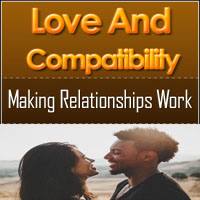


The Power Of A Deep Connection

The journey from close friends to romantic partners is a unique and beautiful experience that defies conventional relationship norms. When two individuals who share a deep and enduring friendship discover the possibility of love between them, it can lead to a love story that is both powerful and lasting. In this article, we explore the transformative process of close friends falling in love and the profound connection that underlies it.
The Strength Of Friendship
Close friends in love are privy to a strong foundation of friendship. They've weathered life's ups and downs together, sharing secrets, laughter, and experiences that have forged a unique bond. The comfort and trust developed during their time as friends serve as the bedrock upon which romantic feelings can flourish.
The Spark Of Romance
The transition from friendship to romantic love often begins with a subtle spark of attraction. It could be a newfound appreciation for each other's qualities, a growing sense of emotional intimacy, or the realization that they share an inexplicable connection. This transition marks the start of an exhilarating journey, one that requires open and honest communication.
Open Communication And Vulnerability
Close friends who choose to explore romantic feelings for each other must engage in open, heartfelt conversations. These discussions provide a space for both individuals to express their emotions, expectations, and concerns. Vulnerability is key, as it allows both parties to be honest about their evolving feelings and ensures that the relationship's foundation is built on authenticity.
The Depth Of Connection
As close friends become romantic partners, their connection deepens in a unique and profound way. The love they share combines the comfort and understanding of friendship with the passion and romance of a romantic relationship. This depth allows for a rich, multifaceted bond that is both enduring and deeply fulfilling.
Challenges And Growth
The transition from close friends to romantic partners is not without its challenges. Moments of doubt or hesitation may arise, but these can be overcome with patience, understanding, and effective communication. Navigating the change requires both individuals to adapt and grow together, facing the inevitable challenges with grace and love.
A Lasting And Meaningful Love
When close friends fall in love, they often create a bond that endures the test of time. Their shared history, deep understanding, and the new romantic connection all contribute to the strength of their relationship. This love story serves as a reminder that some of the most powerful and lasting connections are formed from a foundation of close friendship.
Close friends in love experience a journey that is both unique and beautiful. It demonstrates the enduring power of a deep, lasting friendship and the transformative potential of romantic love. By embracing the transition from friendship to romance with open communication, authenticity, and vulnerability, these individuals can build a love story that is powerful, profound, and long-lasting. The bond formed between close friends who become lovers is a testament to the beauty and strength of human connections.
The Key To Long-Lasting Love
 Shared Values And Beliefs: One of the fundamental aspects of compatibility is shared values and beliefs. When individuals in a relationship align in their core principles and life philosophies, it creates a strong foundation for understanding and respect.
Shared Values And Beliefs: One of the fundamental aspects of compatibility is shared values and beliefs. When individuals in a relationship align in their core principles and life philosophies, it creates a strong foundation for understanding and respect.
Common Interests And Hobbies: Having shared interests and hobbies can lead to quality time spent together. This shared leisure time fosters bonding, enjoyable experiences, and the creation of cherished memories.
Effective Communication: Compatibility often extends to communication styles and habits. Partners or friends who communicate well and can understand each other's needs and emotions have a distinct advantage in maintaining a healthy relationship.
Emotional Compatibility: Emotional compatibility involves an understanding and acceptance of each other's emotional responses and expressions. Individuals who are emotionally compatible are more likely to provide the support and empathy required for a successful relationship.
Life Goals And Ambitions: Compatibility in terms of life goals and ambitions ensures that both parties are moving in the same direction. This alignment prevents conflict that might arise from pursuing radically different life paths.


The Pillars Of Fulfilling Human Connections
 Respect: Respect is a fundamental component of any healthy relationship. It involves valuing each other's opinions, boundaries, and individuality. In a healthy relationship, there is a mutual understanding and appreciation for each person's unique qualities.
Respect: Respect is a fundamental component of any healthy relationship. It involves valuing each other's opinions, boundaries, and individuality. In a healthy relationship, there is a mutual understanding and appreciation for each person's unique qualities.
Trust: Trust is the foundation of a strong and healthy relationship. It's built over time through consistency, reliability, and integrity. Trust allows individuals to feel secure and confident in their connection with others.
Emotional Support: Healthy relationships offer emotional support during times of joy and hardship. Being there for your partner, family member, or friend, and knowing that they are there for you, creates a sense of security and comfort.
Empathy: Empathy is the ability to understand and share the feelings of another person. It's a key component of healthy relationships, as it allows individuals to connect on a deeper level, provide emotional support, and show genuine care and concern.
Quality Time: Spending quality time together is crucial for nurturing healthy relationships. This means being fully present, free from distractions, and engaging in meaningful activities or conversations. Quality time helps strengthen the emotional bond between people.
Shared Goals And Interests: Having common goals and interests can significantly enhance a relationship. Shared passions and ambitions provide opportunities for collaboration, mutual growth, and deeper connection.
Boundaries: Healthy relationships involve respecting each other's boundaries. Knowing when and how to respect each other's personal space and limits is essential for maintaining a harmonious connection.
Conflict Resolution: Conflicts are an inevitable part of any relationship. Healthy relationships are marked by effective conflict resolution. This means addressing disagreements respectfully and finding solutions that work for all parties involved.
Mutual Accountability: Both parties in a healthy relationship should hold themselves accountable for their commitments and responsibilities. Accountability ensures that everyone is dedicated to the relationship's success.
The Bond That Sustains
 Emotional Connection: Love is the emotional glue that binds individuals together. It cultivates a sense of deep connection and intimacy, which is the foundation of any strong and meaningful relationship. This emotional connection fosters trust, comfort, and a genuine understanding of one another.
Emotional Connection: Love is the emotional glue that binds individuals together. It cultivates a sense of deep connection and intimacy, which is the foundation of any strong and meaningful relationship. This emotional connection fosters trust, comfort, and a genuine understanding of one another.
Support And Care: Love is synonymous with care and support. When you love someone, you're willing to go to great lengths to ensure their well-being, happiness, and personal growth. It's about being there for your partner, family member, or friend during both the highs and lows of life.
Acceptance And Understanding: Love encourages acceptance and understanding. It's the ability to embrace your loved ones, flaws and all, and to appreciate their uniqueness. Love allows individuals to be their authentic selves without judgment or criticism.
Motivation For Growth: In loving relationships, there is often a shared motivation for personal growth and self-improvement. Love inspires individuals to become better versions of themselves, not out of obligation, but because they want to contribute positively to the relationship.
Resilience In Tough Times: Love is the force that helps relationships weather the storms of life. When conflicts and challenges arise, the love that underpins a relationship provides the resilience needed to overcome obstacles and emerge stronger on the other side.
Enhanced Communication: Love fosters open and effective communication. Partners who love each other are more likely to listen and speak honestly, building trust and understanding in the process.
Shared Experiences: Love encourages the creation of shared experiences and memories. These shared moments deepen the connection and provide a rich tapestry of mutual history that strengthens the relationship.
Commitment: Love is a driving force behind commitment. It's the emotional bond that keeps individuals dedicated to the relationship. Love motivates them to work through problems, make sacrifices, and invest in the partnership for the long term.
Physical Intimacy: In romantic relationships, love often leads to physical intimacy, fostering a unique and profound connection between partners. This physical expression of love can deepen the emotional bond and create lasting memories.
A Guide To Finding Love Again
 Self-Reflection: Before diving back into the dating pool, take some time for self-reflection. Consider what you've learned from past relationships, what you're looking for in a partner, and what you've discovered about yourself during your time away from dating. This self-awareness can guide your choices and help you avoid repeating past mistakes.
Self-Reflection: Before diving back into the dating pool, take some time for self-reflection. Consider what you've learned from past relationships, what you're looking for in a partner, and what you've discovered about yourself during your time away from dating. This self-awareness can guide your choices and help you avoid repeating past mistakes.
Set Realistic Expectations: It's crucial to have realistic expectations. Understand that the dating landscape may have changed since you were last active. People's preferences and communication methods evolve. Be open to new experiences and adapt to the current dating norms.
Online Dating: Online dating has become a prominent way to meet potential partners. It offers convenience and a wide pool of potential matches. Take time to create an honest and appealing profile, and choose reputable dating apps or websites that suit your preferences.
Open Communication: Effective communication is key to successful dating. Be open and honest with your potential partners about your dating goals, boundaries, and expectations. This transparency will help you find like-minded individuals.
Overcoming Nervousness: It's normal to feel nervous about reentering the dating scene, especially if you've been out of it for a while. Take it at your own pace and remember that it's okay to have some anxiety. Over time, as you engage in more conversations and dates, your confidence will naturally increase.
Expand Your Horizons: Don't limit yourself to your comfort zone. Be open to meeting people with various interests and backgrounds. You might be surprised by the connections you make with individuals you might not have considered in the past.
Safety First: Prioritize your safety. When meeting someone new, choose public places for your first few dates. Inform a friend or family member about your plans and trust your instincts. Your safety should never be compromised.
Building Resilient Bonds
 4. Teamwork
4. Teamwork
Approach stress as a team. When you face stressors together, it can actually strengthen your relationship. Work as a united front to address issues and develop strategies for coping.
5. Set Realistic Expectations
Stress can often lead to unrealistic expectations or demands. Recognize when these pressures are causing tension and take steps to reset expectations. Prioritize what truly matters in your relationship and in your life.
6. Prioritize Self-Care
Self-care is vital for managing stress. Encourage each other to engage in activities that promote relaxation, such as exercise, meditation, hobbies, or spending time with friends.
7. Boundaries
Set clear boundaries to prevent stress from overwhelming your relationship. Create space for personal time and individual pursuits. Know when to say no to additional stressors.
8. Seek Professional Help
If stress is severely impacting your relationship and your well-being, consider seeking professional guidance. Couples therapy or counseling can offer valuable strategies for managing stress together.
9. Problem-Solving
When faced with stressors, focus on problem-solving rather than dwelling on the issues. Collaborate on finding solutions and actively work together to address the sources of stress.